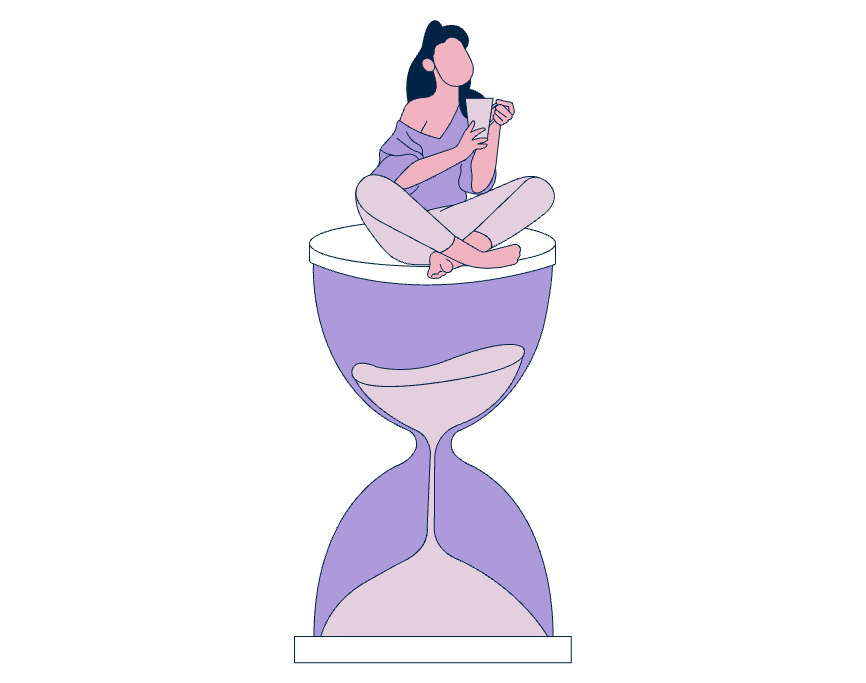One of the biggest challenges with setting boundaries may be an unacknowledged internal drive to avoid those boundaries.
We talked last time about challenging ideas of work as worth and about accepting that no amount of accomplishment can resolve empty feelings.
You could pour a literal ocean into a cup with a hole in it and the cup wouldn’t fill up. But we still sometimes find ourselves in the trap of pursuing fulfillment in that way, moving through our work lives with infinitely porous boundaries that allow others to make outrageous demands on our time.
Poor boundaries and overworking may be suboptimal attempts to cope with trauma.
You may have people-pleasing tendencies that stem from a dark history in which people hurt you when they weren’t pleased.
Saying yes to every project, committee assignment, and other ancillary duty may be a way of making yourself indispensable. A hungry attempt to ensure that you’re needed. Feeling overstretched may feel bad, but it may also be shielding you from even more difficult emotions.
As was recently mentioned elsewhere on this site, studies suggest higher rates of past trauma among healthcare professionals than are found in the general population. One study even found that 68% of healthcare workers reported encountering violence, abuse, or neglect in their histories, with 33% experiencing this trauma exposure before the age of 13.
Healthcare professionals bring these trauma histories with them into the work, where they often face additional trauma exposure.
For example, the psychological impact of workplace violence is extensive. One pre-pandemic study found that of healthcare professionals with any incident of physical or verbal violence, 60.2% endorsed at least one posttraumatic symptom, 9.4% missed work, and 30.1% had thoughts about leaving their job or career (Rosenthal, et al., 2018).
A more recent study found effects such as: demoralization, depression, loss of self-esteem, feelings of ineptitude as well as signs of post-traumatic stress disorders like sleeping disorders, irritability, difficulty concentrating, reliving of trauma, and feeling emotionally upset. There were also effects in the workplace, which were noted to be a decline in the quality of care delivered, increased absenteeism, and health workers’ decision to leave the field (Lim, et al., 2022).
As one trainee put it in another recent study:
“‘The workload is so immense that something shocking will happen and you are expected to just brush it off and move on to the next patient” (Fowler, Vara, & Ng, 2024).
And, of course, violence is far from the only traumatizing and demoralizing experience that healthcare professionals may face in the workplace.
Helplessness is associated with distress in its own right, on top of the distress inherent in the situation we are helpless to address. On the other hand, feelings of competence and strength promote psychological well-being (Qourrichi, et al., 2024).
A 2022 study on physicians in China during the early days of COVID found that being able to psychologically detach from work during off time gave the physicians opportunities to exercise control in other domains of their lives, reaffirming their sense of self-worth, which then helped them recover from helplessness at work.
Interestingly, the same study found that high work meaningfulness can actually intensify feelings of helplessness in a significant crisis situation. Healthcare administrators and managers and others who may want to be encouraging to physicians by reminding them of their essential role may actually be making the burden heavier for those physicians (Meng, et al., 2022)
Your own self-talk may be making the burden heavier.
There are steps you can take to cope, including:
- Taking care of yourself. To the extent that you are able, get enough rest, ensure proper hydration and nutrition, and engage in regular exercise.
- Writing. Journaling, poetry, and other written forms of expression are powerful tools for processing and managing emotions. If you worry that writing will feel like too much, set a timer for yourself before you start. When the timer goes off, it will not switch off your emotions but will bring you back to the present.
- Using grounding techniques. One effective grounding exercise can be called 5-4-3-2-1. Gently focus your attention on yourself and your environment and identify:
- 5 things you can see;
- 4 things you can touch;
- 3 things you can hear;
- 2 things you can smell; and
- 1 thing you can taste.
If you are unable or prefer not to do one of these steps, simply leave it out.
It may be that these types of coping strategies are insufficient and you need to connect with professional help.
There is an exciting and transformative move within the mental health community towards increasing cultural competence around medical culture.
There are co-occurring efforts in both the medical and mental health communities to actively reduce stigma and decrease barriers to care (https://frontlineconnect.org/ has significant resources).
I invite you to acknowledge your pain and your humanity, and to take steps towards healing.
References/Further Reading:
- Fowler, L., Vara, A., & Ng, L. (2024). Psychiatric trainees’ experiences of workplace violence: qualitative analysis. BJPsych Bulletin, 1-6.
- Lim, M. C., Jeffree, M. S., Saupin, S. S., Giloi, N., & Lukman, K. A. (2022). Workplace violence in healthcare settings: The risk factors, implications and collaborative preventive measures. Annals of Medicine and Surgery, 78. https://doi.org/10.1016/j.amsu.2022.103727
- Meng, L., Lin, X., Du, J., & Lu, X. (2022). How can employees break free from helplessness in critical work incidents?. International Journal of Stress Management, 29(4), 330.
- Qourrichi, A., Ouazizi, K., Saaliti, E., Ait, D., Ali, L. E., Hilal, M., Nucera, G., Rizzo, A., Yildirim, M., Bahramizadeh, M., Batra, K., Szarpak, L., Bulut, S., Chirico, F., & Khabbache, H. (2024). The effect of learned helplessness on the psychological health of healthcare workers. Journal of Health and Social Sciences, 9(1), 129-143.
- Rosenthal , L. J., Byerly, A., Taylor, A. D., & Martinovich, Z. (2018). Impact and prevalence of physical and verbal violence toward healthcare workers. Psychosomatics, 59(6), 584-590.

Leave a Reply